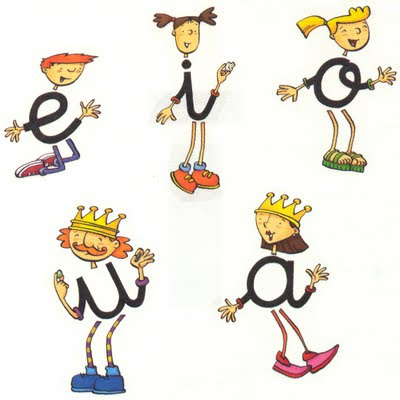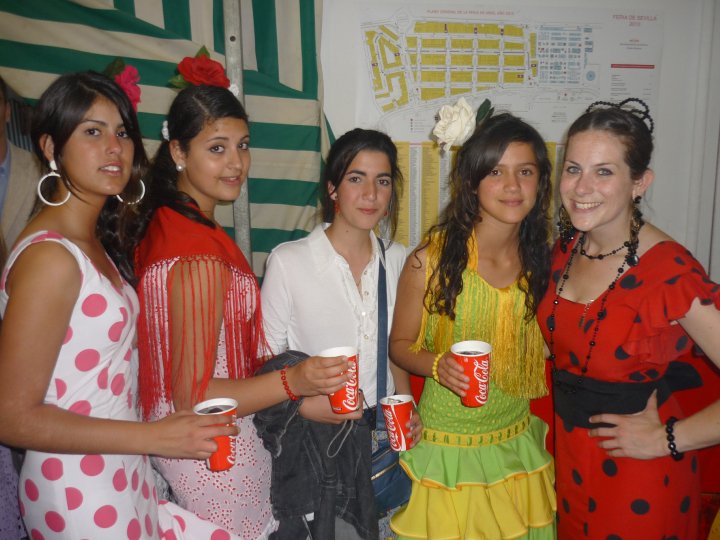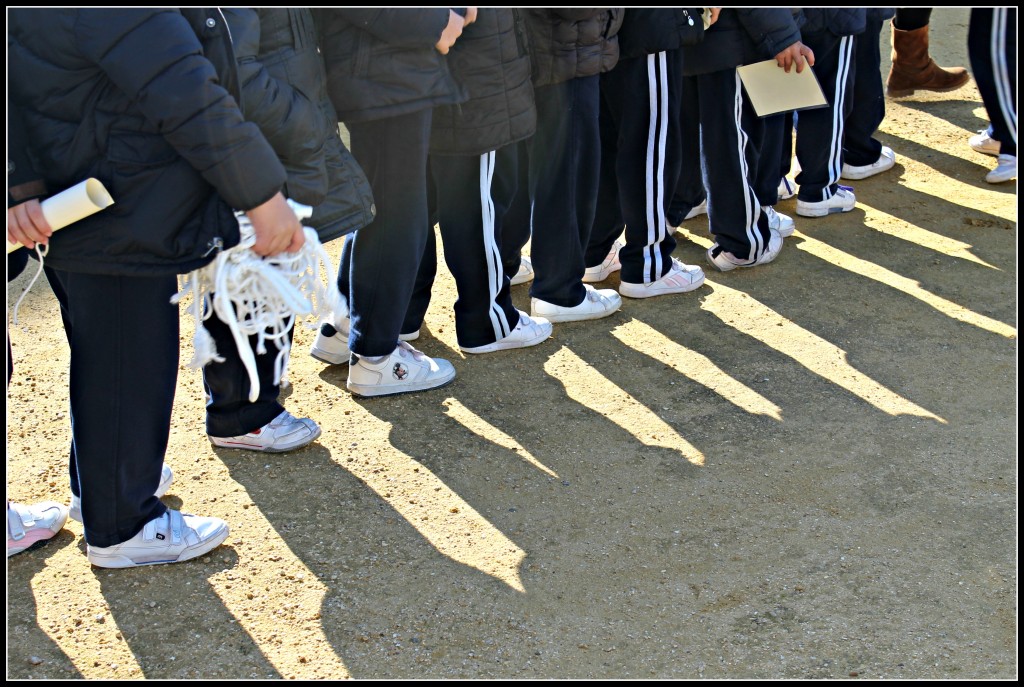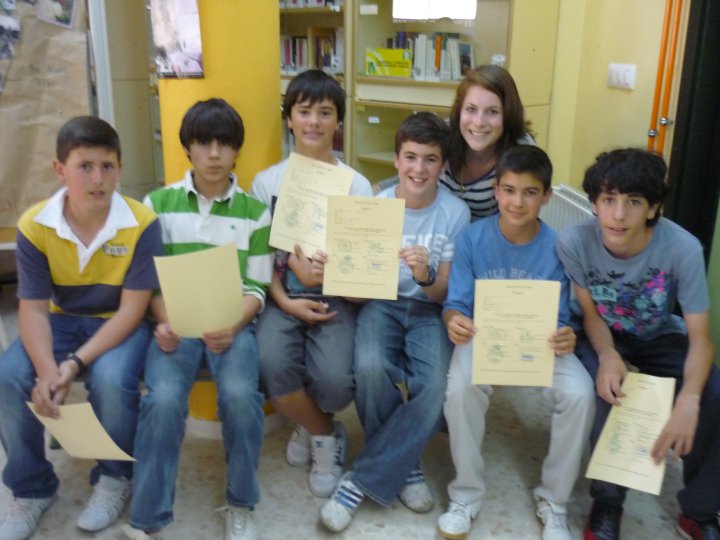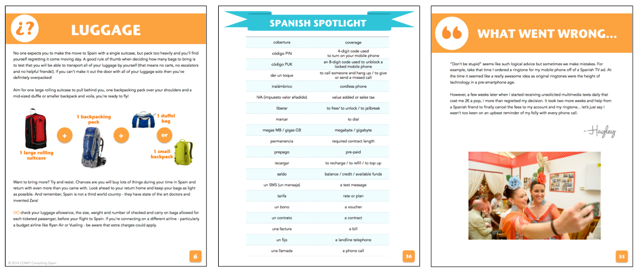As the school year winds down, I often think about how I ended up here. Not physically in Spain – after a summer drinking more Kalimocho than water, it was a given I’d be back – but how I turned down a radio news job in Chicago to come to Spain and be a slave to Cambridge exams, student reports and surly teenagers.
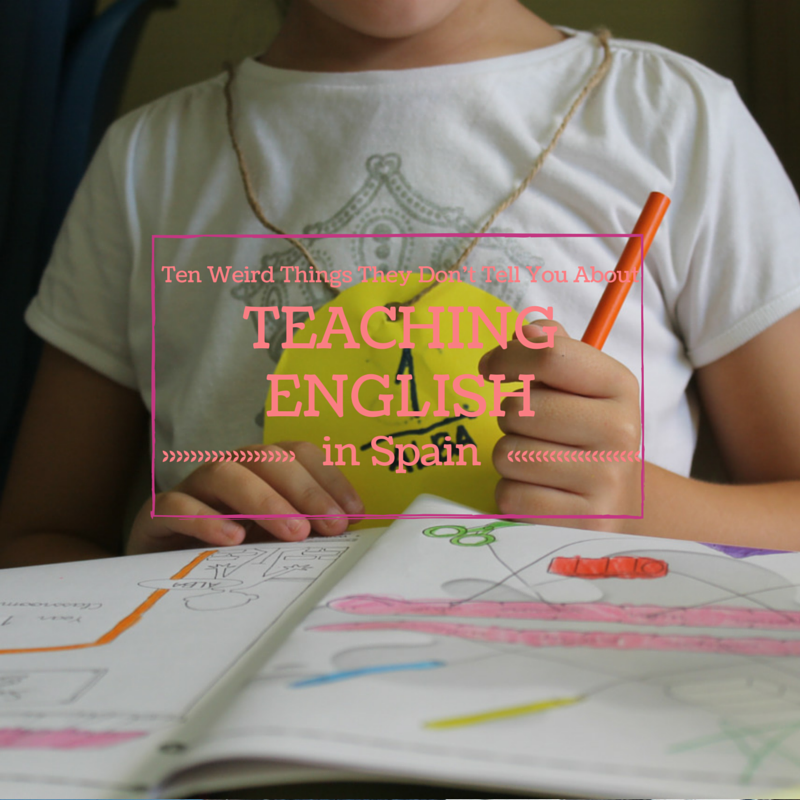
For someone who was set on being a journalist since age 11, it shocked everyone to hear me utter, “I actually like teaching.”
Having not gotten an education degree, I was thrown to wolves that looked an awful lot like bored fourteen-year-olds and told to teach past simple irregular verbs during my first week as a maestra. After eight years and the proper TESOL certificate to teach in Spain, I’ve taught a range of levels, from three-year-olds who refuse to take a pacifier out of their mouths to oncologists whose questions had me stumped. I’ve run day camps and language schools. I’ve handed out detentions and failing grades. And I’ve survived working in the Spanish public and private school system.
If I say one thing, let it be that teaching in Spain is a lesson in hilarity and it’s a lesson in learning to just let it go.
Cursive Numbers and Letters
“My name is Miss Cat” I stated to the 27 kiddos sitting in front of me, turning from writing in colored chalk on the blackboard. Most were picking their nose, leaning into the kid next to them or fiddling with something. “Can you read that?”
During my trial lesson at a school I’d later be employed at, I was not having much luck rousing up the kids, who were just back from recess on a hot September day. They were sluggish and not impressed, and I was beginning to panic that I wouldn’t be offered a job. Try planning a lesson for five-year-olds when you have no idea if they can even put on their jackets, let alone follow a lesson entirely in English.
I switched gears, and they seemed to liven up, and after a three-hour interview and another class, I was hired as the bilingual preschool teacher.
And before I learned the names of my 150 new alumnos, I was introduced to the characters of Letrilandia and given feedback from my practice class: Your penmanship is terrible.
I’d never claimed to have perfect handwriting, but it’s legible (and by that time, I had three years of being a language assistant and had directed a summer camp). As it turned out, Spanish children learn to write cursive before they learn to print, and that not writing according to their system had my students confused my lowercase letters – the Bs became Fs, the Ss were Rs.
Additionally, my task of teaching numbers to 100 meant I had to start crossing my 7s and giving my 1s a bit of flair. Calling on the age-old “If you can’t beat them, join them,” I found it was easier to change my old habits than try to change theirs.
There are five continents, not seven, and Columbus is the President of America
Yes, what you just read. The entirety of the Americas are considered one continent, and Antarctic is just one big lump of wasted space.
As for the Columbus thing, there’s an entire day dedicated to the Spanish race on October 12th, the day the Italian-born explorer reputedly landed in the Caribbean Islands. Working in a preschool for a very Spanish family, I was asked to dress up as a Native American (I opted for a sailor instead) and remind my students how Spain had done the world a service by “liberating” the natives during their numerous expeditions to the New World – all as the Spanish national hymn rung out for the whole morning.
Spanish holidays are varied – from Peace Day in elementary school to Day Against Domestic Violence for the older lot, so embrace them. But please teach them that Antartica isn’t wasted space because there are polar ice caps and adorable animals.
Lockers and Book bags
I came to teach in Spain right in the middle of the High School Musical craze. Apart from the folders emblazoned with Troy Bolton and endless questions about whether or not American high schools had glee clubs and pep rallies, I had students involve me in another plot: to convince the school’s director to install lockers.
Really, they had a point: high schoolers have a dozen different subjects, some of which they have just once or twice a week. Backpacks sagged and kids would often turn up without materials, having had no room for their PE notebook or forgetting to pack a protractor. Lockers would have absorbed some of the noise in passing periods and helped correct premature stooping.
I got the last laugh when I played an April Fool’s joke on them, proclaiming there would be lockers for all.
As for school supplies: pencils come without eraser (evoking the endlessly hilarious, “Can I borrow a rubber?” request), kids like to doodle on themselves with sharpies and white out, and paper has a size – the letter A followed by a number.
Lunchtime and Snack Time
When I taught preschool, my favorite time of the day was recreo, or recess. My zany babies could run and play while I sat on a bench getting Vitamin D, and they’d hand me their half eaten sandwiches, bananas and cookies.
Midmorning snacks are far more common than eating lunch at public schools – in fact, my students were shocked when I told them that a part of my daily chores was making a brown bag lunch. Instead, students have a 30-minute recess that happens midmorning. Expect common areas of the school to be littered with wrappers and juice boxes.
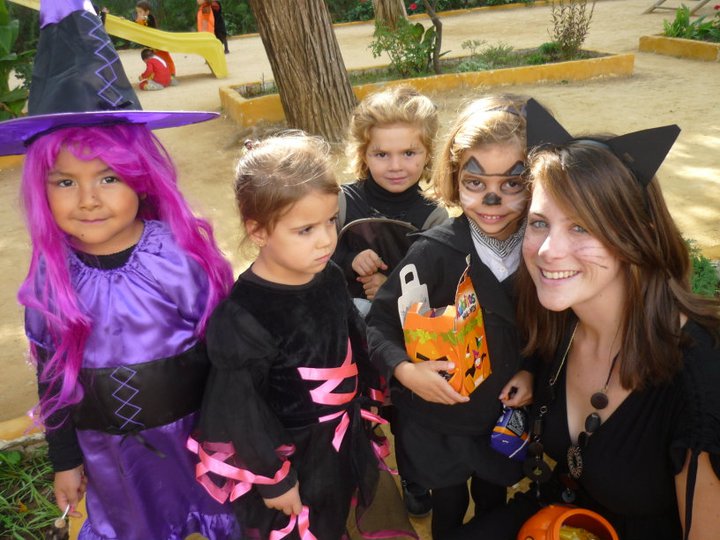
Teaching as a conversation assistant meant that I could break out of school and have a coffee down the street with other teachers, and now that I work in the evenings, I avoid shopping between 11 and noon, lest I have to claw my way to the Polvillo for bread when teens from the school next door are ordering bocadillos.
If you’re placed in a private or concertado school, your students will sometimes stay for lunch in the mess hall, called a comedor. Run from the puré de garbanzos and the palitos de merluza!
Gossip
Walking into a newly assigned baccalaureate class after a schedule switch, I quickly introduced myself and began a lesson. I could hear the students snickering and immediately felt my butt to see if I’d sat in a batido or something at recess.
One girl, probably named Mari Algo, raised her hand but blurted something out in Spanish before I could even call on her. I gave her my best side eye for interrupting and told her that if she needed something, it would have to come in English.
“Yes, erm, who is [Novio’s name]? Valle say us you are a boyfriend.”
Valle, my effervescent coworker and part-time spirit animal, just smiled and shrugged. On one morning commute, I’d confided in her that I’d met a guy I was interested in, and she mentioned it to her students. I took it in stride (hola, my name is Cat, and I have a blog!).
You know how lice is a thing in elementary schools in school, an almost rite of passage in primaria? Liken that to gossip in Spanish schools – once it starts, it’s hard to stop. If you want something to be private, it’s best not to mention it around the brasero on a cold day.
On a First Name Basis and You May Touch the Children
Speaking of Valle, I was also shocked to find that teacher-student relationships are a lot more relaxed than they are back in the US. I was called by my first name and asked personal questions about my age/sex/location. Students wanted to know if I’d buy them beer. I once ran into one partying who was hysterical, and I took her back to my house to settle down and dry out for a few hours.
Oh, and then there’s the end-of-year dinners where students drink the Spanish equivalent of Boone’s Farm, all under the watchful eye of their teachers from senior year. I had to embrace it and have a drink with my graduating seniors at a disco because, hey, drinking age is 18. Never mind that I was only a few years older than them!
Working in an elementary school, I was once told the children found me to be cold and uncaring. I was wiping their boogers and reminding kids that the Reyes Magos were watching their bad behavior (which included hiding my winter jacket in a toy box overnight) – I was certainly caring.
In Spain, it’s totally fine for teachers to hug and touch students, and many are close with older students outside of school. Some have followed me on twitter and like to message me about what last week’s homework was. My response is always the same: get off of twitter and do your homework, lazy!
On Wednesdays, We Wear Track Suits
I was appalled to learn that my high schoolers only got two hours of gym class a week. They seemed to have more pep in their step when those special days rolled around (though I could usually smell them before they entered class. Teens and PE and Spring in Southern Spain is a torture worse than my allergy to olive blossoms). Plus, they came to school with a special uniform.
Gone were the sheer shirts and the booty shorts – it was chandal day, a public service announcement that my teens who had been chowing down on Doritos at recess were going to be running a few laps around the playground.
Working in a private elementary school, my kids called it Tracksuit Day, or ¡toca chandal! I loved chandal day because they admittedly smelled better (their parents gave them tiny packs of cologne for their school bags because, pijos) and I didn’t have to re-tie 25 ties and dust off 25 tiny blazers.
ABCs and B1-B2-C1 (and Trinity-Cambridge-TOEFL)
Spain has what’s called ‘titulitis’, or a problem with requiring documents to prove anything. Can you drive a car? PROVE IT. Can you pick up a letter at the post office from your grandma? PROVE IT. And when it comes to speaking English, only a stamped letter from an official language assessment will suffice.
The Spanish government requires all university students to present a minimum B1 level of English to even get the paper copy of their degree (ach-titulitis!). If you’re totally new to teaching, the system of level assessments and certificates is confusing, especially one against another. What does a Trinity Level 7 correspond to in Cambridge? What does CPE stand for? Try being in charge of academic development at a school and explaining that to parents whose first defense will be, “I don’t know, I studied French.”
Yeah.
The Takeaway – School’s Out for Summer
I often think back to my first days of teaching. I had a newly minted TEFL degree, teaching genes apparently in my blood and no idea what to do in front of 30 teenagers who’d rather copy Justin Bieber lyrics off of the blackboard (yeah, that’s how long I’ve been at it!).
I always swore I’d never be a teacher after watching my mom scramble on Sunday nights or having to manually put in all of her grades into a gradebook. The boss I had when I was an auxiliar once told me that I had vocación: I had what it takes to be a teacher. After nine school years, probably 2500 students and a million eye rolls later, I think she’s right.
Teaching in Spain is rewarding, frustrating and hilarious all rolled into one job with pretty amazing vacation time.
Want the skinny on teaching in Iberia and tips on how to land and get situated in Spain? I co-penned a comprehensive e-book in 2016 on how to move to Spain and set up as a teaching assistant or ESL teacher.
Read more about it here or purchase it for 10€ through eJunkie!
More on teaching in Spain: How to Apply to the Language Assistant Program | Paying Teaching Programs in Spain | What it’s Like to be a Language Assistant
